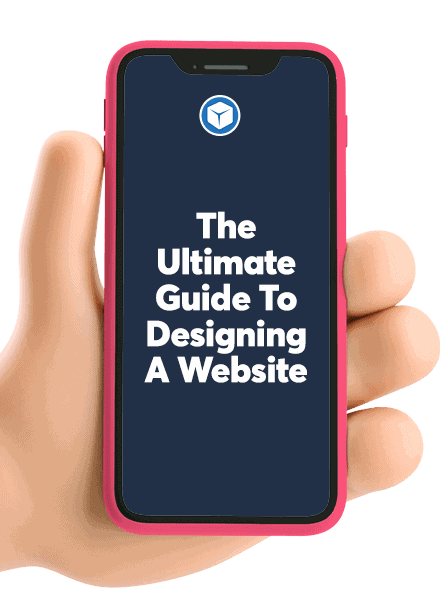
Your case studies page is the final step in the prospect engagement design of your website. We’ve walked you through the other parent pages leading to this in the previous blogs in this series. If you’ve skipped straight to here, be sure to read the whole series so you’re up to speed!
Just to recap to be clear about how your prospect will travel through your site:
- Your prospect will come to your HOME PAGE, from a web search, link, paid ad, landing page, blog link or social media link. There they will see your Position Statement and be given a Primary Action step to follow as well as a Secondary Action. These will be along the lines of Buy Now or Read More, depending on what your business offers.
- Your Read More action will take your prospect to the CAPABILITIES LANDING PAGE. There you will provide some information on what you do and how you do it, along with links to your various services. Your Primary and Secondary Actions Buttons will bring your reader to make immediate contact or direct them deeper into the site.
- Each of your listed Services will lead to an individual SERVICES LANDING PAGE. Here you discuss the service in detail and list some case studies. Again your Primary and Secondary Actions will direct your reader to complete the steps to sale or contact, or click a Case Study to learn more.
- Each Case Study will be detailed on the CASE STUDY LANDING PAGE, completing the chain and directing the reader to buy or contact you.
The Purpose of a Case Study
A case study is a story of success in real life. Rather than discuss the many ways your service can be applied and how great it will be for the reader, which are hypotheticals, case studies rely on actual facts and real-life subjects. Your case study pages will give you a chance to showcase your model outside of the box.
What you’re saying here is ‘this is a true story of how this person, or this situation, applied our service to their unique problem, with amazing results.’
It’s absolutely okay to get specific and relate to one particular application of your service. You don’t know (but you can take an educated guess) why your reader is on your site looking for help. Rather than sell to everyone and cover all circumstances, you can use a case study to drill down to one specific problem where your solution was applied.
This is where your industry experience will come into play. You will certainly see patterns in your customer’s needs over time. Look to showcase your most common problem and service application first: What do most people need when they come to you? This is a great way to engage a wider audience while delivering information on a specific case.
The evidence provided in a case study is perfect for assuring your prospect that results are genuine and they can achieve them too.
Having a number of case studies listed on the Services Page will enable you to create a number of links to different Case Study Pages. This gives you the scope to follow a number of different real-life service applications if you have a number of top-selling products, or you have a range of very common problems you solve that you’d like to explore.
If you only have one typical type of application for your business offering, your work experience will allow you to display this successfully multiple times in the real world, so different case studies on the same problem and outcome are absolutely recommended.
As you may be able to see, case study evidence is as much about you and your service proof as your product’s ability.
When you have industry experience, you will have case studies to draw on. Even though it’s subtle, the evidence of your proven work experience is powerful and won’t be missed by your reader.
How to Format an Effective Case Study
There is a simple formula to achieve a quality case study.
Simply apply this formula to engage with your readers: Outline a problem and show how a solution was reached with assistance from your company.
We’ll go into more detail here, for now, here are some tips you’ll want to keep in mind:
- Be sure to include an action step for them to take to complete the sale
- Be honest and clear about who used your product and the result they achieved
- Stick to one product at a time to help reduce confusion
- You want to look for at least 350 words, with 500-600 being ideal
- Make sure your content is indexable
- Include a client testimonial
- It’s best not to have a secondary action step or menu that clicks through to other case studies from here. Have this case study stand alone with a menu click or action to go back to the Services Landing Page if they want more information. One way to do this is to include a list of services (like you had in the capabilities landing page) with links through to these services.

Your Case Study is a story of success
The way you word your case study will depend on your target audience and what you offer, if you are soft and friendly or brief and matter of fact. No matter what you choose, adopt a factual tone and make it as relatable as possible by including details. It can be helpful to imagine you have a potential customer sitting in front of you.
Tell the story online the same way you would to someone in the same room as you.
Here is a basic outline for your case study to follow…
- Overview (who the client is, what they do)
- The Problem (the client’s need)
- Goal (the client’s future want)
- The Solution (standout application of your product or service)
- Result (client’s satisfaction)
The biggest element when it comes to case studies is the impact you had on your client. The results are the driver and motivator to get those leads over the line and convert them to sales. Make sure the case study results are wowing, and that you take time to describe them in detail as well as back up your claims with measurable evidence.
Clearly describing the initial problem they had will be effective in evoking emotion and putting your prospect in the case study’s shoes, ‘Oh yes, I know this feeling, this is ME!’ That way, when you describe the satisfaction of the solution, they will continue in this frame of mind and see their results and satisfaction as well.
Your story will begin with your real-life subject. Introduce them and provide something unique about them, this helps identify them as real people, but it can also strengthen your case for why they needed your services.
Some examples might be
- Widgets R US were looking for…
- Daniel Stubbs is a bachelor living in Singapore…
- Katie, a single mum was struggling to…
- John was an isolated teenager…
Do keep the information relevant to either your target audience, or your product application. It will seem strange, ineffective or inappropriate to give out customer details that aren’t directly related back to their purchase or goal.
Along with your introduction, explain this person’s initial problem. What is it they want? In most cases this will be something they want help with: there is a struggle or conflict they are not able to solve on their own.
Next, highlight what they need. Most customers have a deep driving need under their want. So someone looking for a matchmaking service wants a relationship, but what they need is companionship and love. By appealing to this greater need, you will engage your readers on a deeper level and provide more motivation for them to buy or follow through. A good way to do this is to say something like, we were able to identify that what Katie needed was a…, or, through our unique discovery session it came to light that Katie was in need of…
When you make good on your promise for results that meet your client’s needs, you also bring your customer greater satisfaction and earn their loyalty and testimonials.
Now explain that by applying your service in a certain way this person saw results. To make this more impacting it’s good to include measurable results. This can be achieved by including the time frame results were witnessed or the milestones they saw on their journey. For example, ‘Maria’s skin condition improved significantly after a 30-day cycle and her skin was completely clear after 90 days. Maria was delighted by her skin’s youthful, smooth appearance.’
You can also use the case study space to highlight anything your customer found enjoyable, like exceptional customer service, fast turnarounds and value for money.
In most cases, it’s not important to explain the process or detail each step they took to reach results. The main concern your prospects have is: Will this work for me?
If you think your prospect might have concerns around a certain part of the process, you can include information specific to address these and answer any questions your prospect might have. For example, if your prospect had doubts about:
1. The time it takes…
She found she could easily insert the steps into her morning routine…
2. How complicated the process will be…
Daniel found that team members were always available online and happy to help walk him through the next step, giving him absolute confidence to see it through.
3. Not getting results specific to their needs…
Katie was able to see the design at each drafting stage and put in feedback for what direction she wanted it to take.
4. If you have an element in your process that is unique to your competition…
Using this unique additional step, Helen was finally able to achieve the results that had been alluding her and lost an incredible 20 kilos in three months.
In this way you can use certain points in the process to reassure your prospect that the process will work for them and they can achieve results, rather than detailing every step of the process.
Be sure to treat your information as a valuable asset, shared only with those who are committed to getting results with you.
Another reason you don’t want to walk your prospect through every step of the process is so they have a reason to come to you. Your aim is to help someone accomplish something they can’t manage themselves, if you give them the entire process, what’s to stop them from using it without you, or combining it with products from your competitor?
Everything in your case study is designed to highlight one thing: Results
This is the number one priority of your case study: to show real-life results.
When you are selecting your case studies look for times when results were vivid and measurable. If you do not have a way of measuring the quantity of a result, you can show the quality instead. Better yet, show both.
If your reader has jumped straight to your case studies from a link on a previous page (and yes these should have been installed whenever you mention a case study on parent pages) everything is okay. It just means that your reader was ready for this step earlier and wanted that evidence in living proof.
You want to build a web of access points across and between your pages to allow the unique needs of each visitor to your website to be met.
The Ultimate Guide To Designing A Website:
- How to write copy for a better positioning statement
- How to guide your prospect through your website
- The best way to design your home page
- The best way to design your capabilities landing page
- The best way to design your services landing page
- The best way to design your case study layout
- How to design your content marketing hub layout
- How to design your content marketing article layout
- The five essential prospect engagement points
- The best stock imagery style guide





